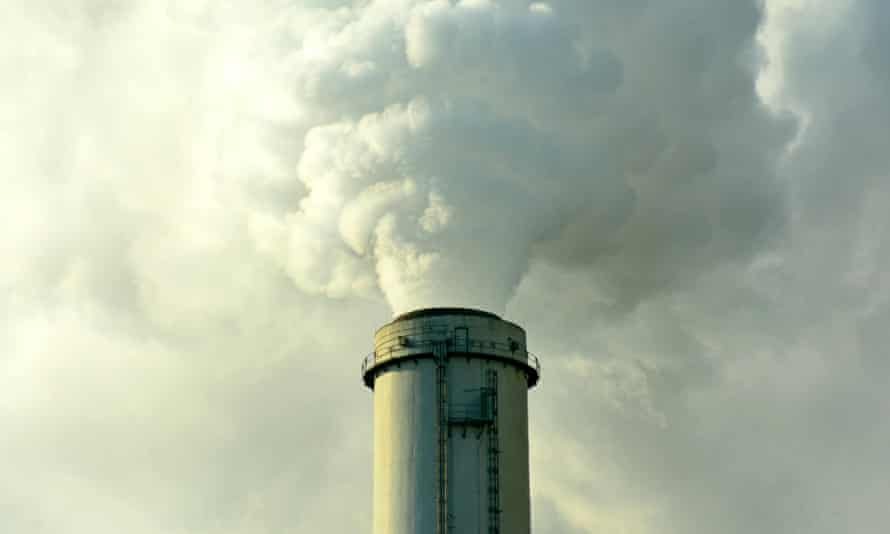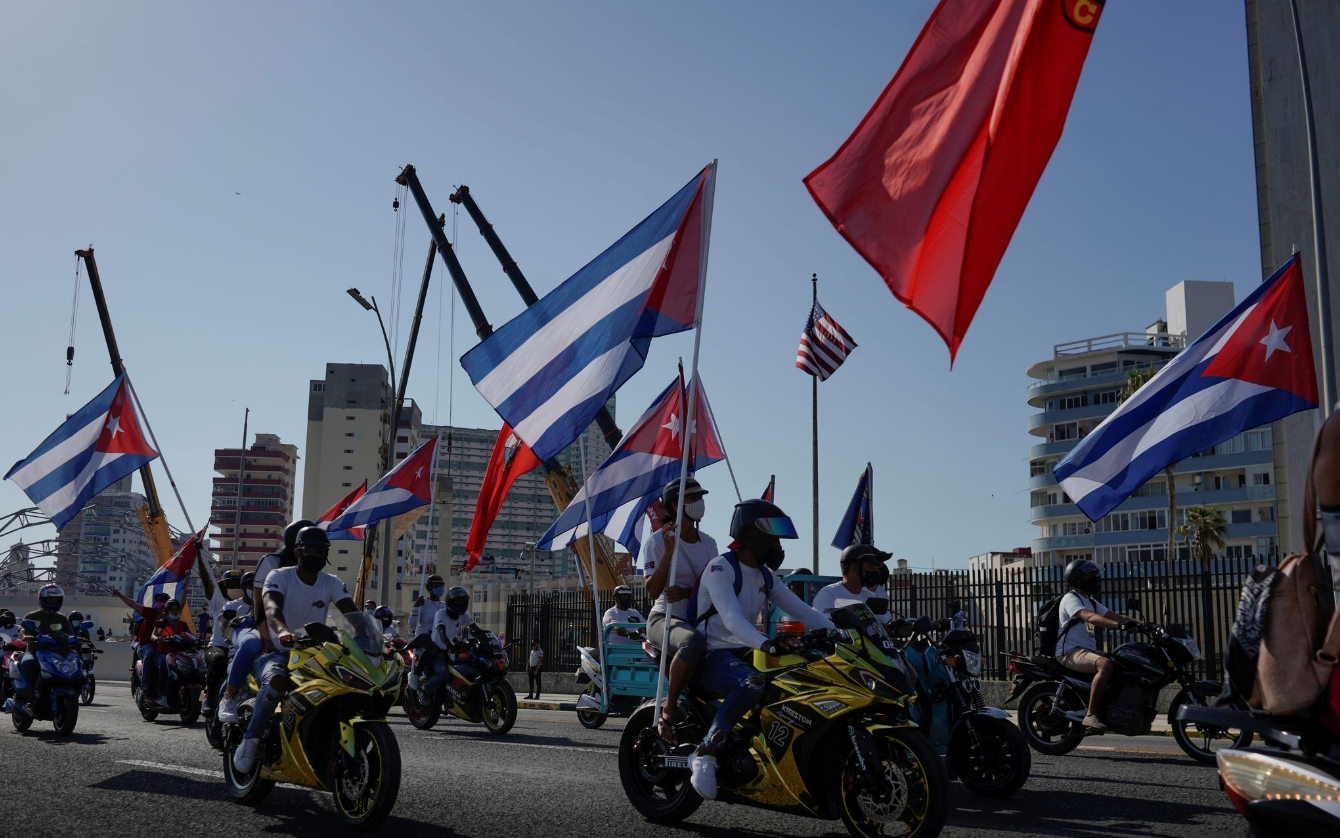Rebecca Solnit
While Covid ravaged across the world, air pollution killed about three times as many people. We must fight the climate crisis with the same urgency with which we confronted coronavirus

‘Climate change is invisible, in everyday political consciousness, because it occurs on a scale too vast in time and space to see with the naked eye and because it concerns imperceptible phenomena such as atmospheric composition.’ Photograph: Jeff Zehnder/Alamy
Fri 2 Apr 2021
It is undeniably horrific that more than 2.8 million people have died of Covid-19 in the past 15 months. In roughly the same period, however, more than three times as many likely died of air pollution. This should disturb us for two reasons. One is the sheer number of air pollution deaths – 8.7 million a year, according to a recent study – and another is how invisible those deaths are, how accepted, how unquestioned. The coronavirus was a terrifying and novel threat, which made its dangers something much of the world rallied to try to limit. It was unacceptable – though by shades and degrees, many places came to accept it, by deciding to let the poor and marginalized take the brunt of sickness and death and displacement and to let medical workers get crushed by the workload.
We have learned to ignore other forms of death and destruction, by which I mean we have normalized them as a kind of moral background noise. This is, as much as anything, the obstacle to addressing chronic problems, from gender violence to climate change. What if we treated those 8.7 million annual deaths from air pollution as an emergency and a crisis – and recognized that respiratory impact from particulates is only a small part of the devastating impact of burning fossil fuels? For the pandemic we succeeded in immobilizing large populations, radically reducing air traffic, and changing the way many of us live, as well as releasing vast sums of money as aid to people financially devastated by the crisis. We could do that for climate change, and we must – but the first obstacle is the lack of a sense of urgency, the second making people understand that things could be different.
I have devoted much of my writing over the past 15 years to trying to foreground two normalized phenomena, violence against women and climate change. For all of us working to bring public attention to these crises, a major part of the problem is trying to get people engaged with something that is part of the status quo. We are designed to respond with alarm to something that just happened, that breaches norms, but not to things that have been going on for decades or centuries. The first task of most human rights and environmental movements is to make the invisible visible and to make what has long been accepted unacceptable. This has of course been done to some extent, with coal-burning power plants and with fracking in some places, but not with the overall causes of climate chaos.
The first obstacle is the lack of a sense of urgency, the second making people understand that things could be different
Climate change is invisible, in everyday political consciousness, because it occurs on a scale too vast in time and space to see with the naked eye and because it concerns imperceptible phenomena such as atmospheric composition. We can only see its effects – as cherry blossoms in Kyoto, Japan, peaking earlier this year than at any time since records began being kept in 812 AD, and even there the beauty of flowers is gloriously visible while the disturbance of seasonal patterns is dry data that is easy to miss. Other effects are often overlooked or denied – there were California wildfires before climate change, but they are bigger, stronger, faster, in a longer fire season now, and recognizing that also requires paying attention to data.
Among the striking phenomena of the early weeks of the pandemic were air quality and birdsong. In the quiet as human activity halted, many people reported hearing birds singing, and across the world air pollution levels dropped dramatically. In some places in India, the Himalayas were visible again, as they had not been for decades, meaning that one of the subtle losses of pollution was vistas. According to CNBC, at the outset of the pandemic, “New Delhi recorded a 60% fall of PM2.5 from 2019 levels, Seoul registered a 54% drop, while the fall in China’s Wuhan came in at 44%.” Returning to normal means drowning out the birds and blurring out the mountains and accepting 8.7 million air pollution deaths a year.
Those deaths have been normalized; they need to be denormalized. One way to do so is by drawing attention to the cumulative effect and the quantifiable results. Another is to map out how things could be different – in the case of climate change, this means reminding people that there is no status quo, but a world being dramatically transformed, and that only bold action will limit the extremes of this change. The energy landscape is also undergoing dramatic change: the coal industry has collapsed in many parts of the world, the oil and gas industry are in decline. Renewables are proliferating because they are steadily becoming more and more effective, efficient and increasingly cheaper than fossil-fuel generated power. A lot of attention was paid to whatever actions might have caused Covid-19 to cross from animals to humans, but the actions that take fossil fuel out of the ground to produce that pollution that kills 8.7 million annually, along with acidifying oceans and climate chaos, should be considered far more outrageous a transgression against public health and safety.
My hope for a post-pandemic world is that the old excuses for doing nothing about climate – that it is impossible to change the status quo and too expensive to do so – have been stripped away. In response to the pandemic, we in the US have spent trillions of dollars and changed how we live and work. We need the will to do the same for the climate crisis. The Biden administration has taken some encouraging steps but more is needed, both here and internationally. With a drawdown on carbon emissions and a move toward cleaner power, we could have a world with more birdsong and views of mountains and fewer pollution deaths. But first we have to recognize both the problem and the possibilities.
Rebecca Solnit is a Guardian US columnist. She is also the author of Men Explain Things to Me and The Mother of All Questions. Her most recent book is Recollections of My Nonexistence











 © Mohamed Abd El Ghany/Reuters Men pass in front of a poster for The Pharaohs' Golden Parade in Cairo for the transfer of 22 mummies from the Egyptian Museum in Tahrir Square to the National Museum of Egyptian Civilization in Fustat, April 1, 2021.
© Mohamed Abd El Ghany/Reuters Men pass in front of a poster for The Pharaohs' Golden Parade in Cairo for the transfer of 22 mummies from the Egyptian Museum in Tahrir Square to the National Museum of Egyptian Civilization in Fustat, April 1, 2021.






